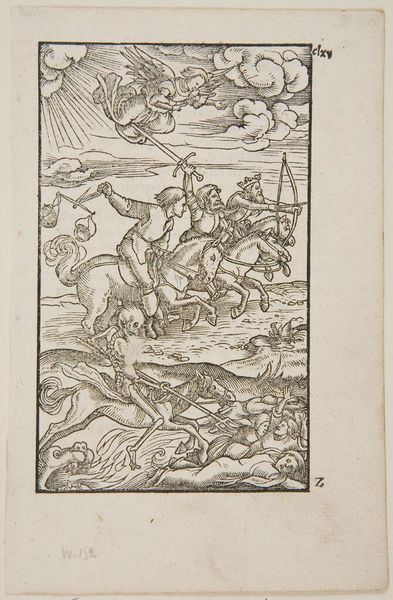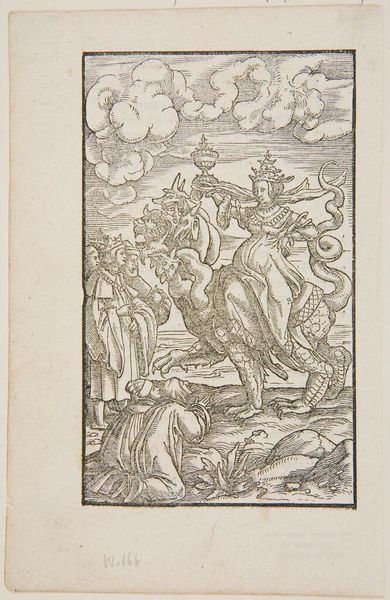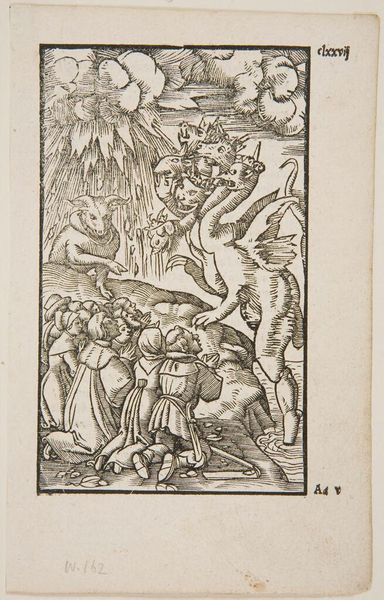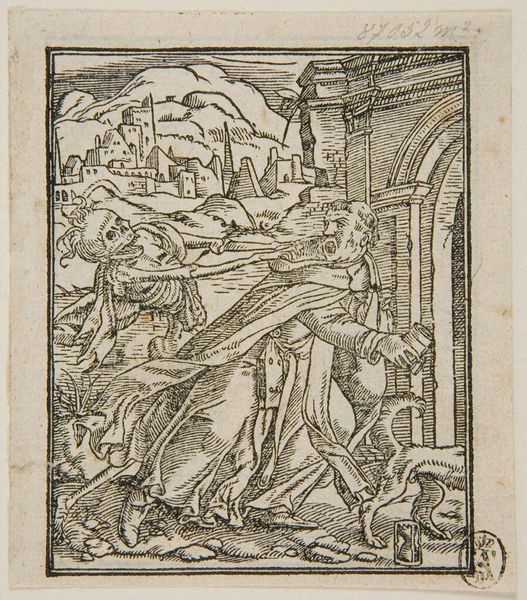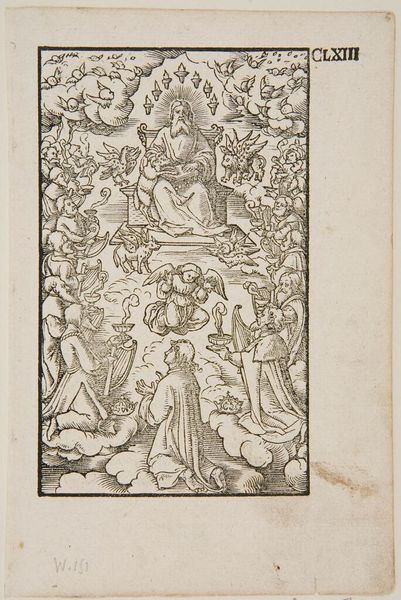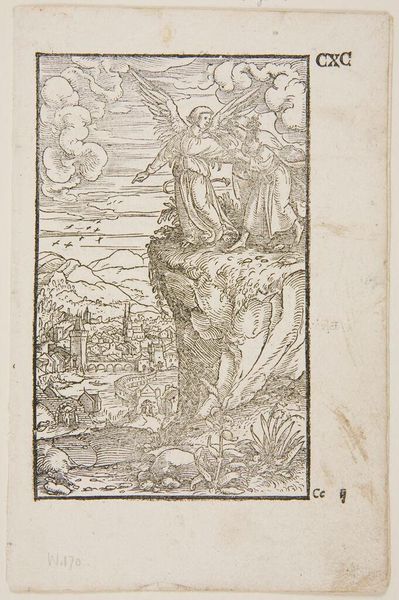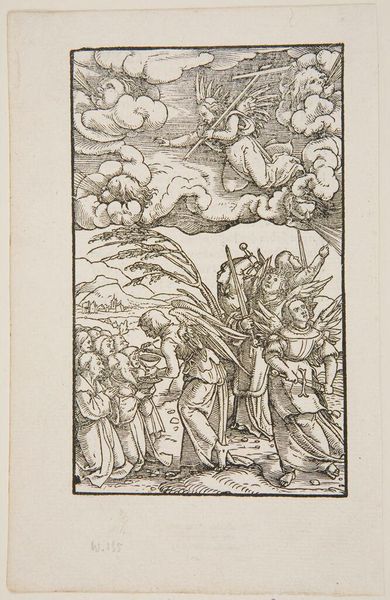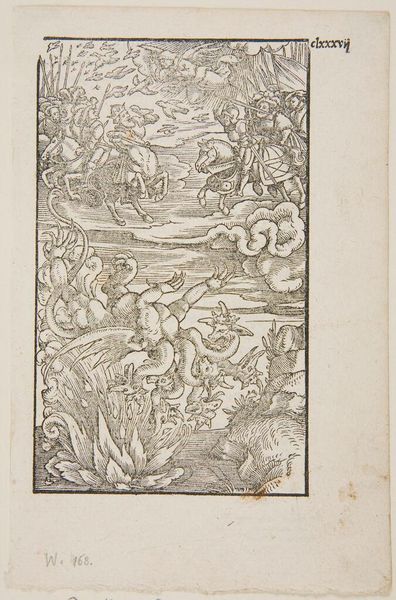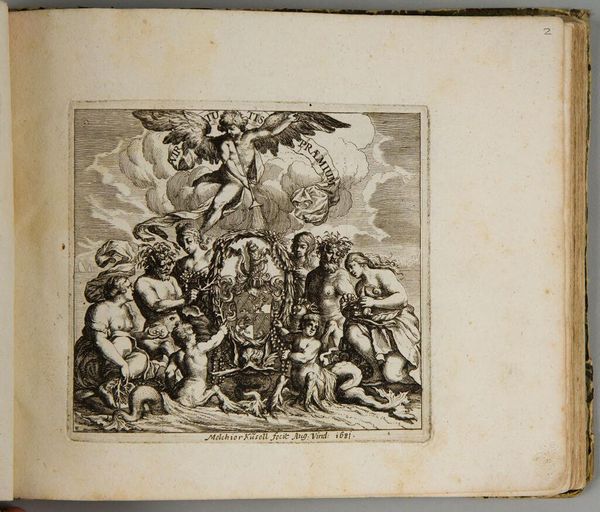
Copyright: CC0 1.0
Editor: This woodcut, "The Fall of Babylon" by Hans Holbein the Younger, is intensely detailed. The contrast between the heavenly figures above and the ruined city below is quite striking. What can you tell me about the social context of this work? Curator: Holbein was deeply embedded in the Reformation. Prints like this functioned as visual propaganda. Babylon, in this context, symbolizes the perceived corruption of the Catholic Church. Notice how the celestial realm triumphs over earthly destruction; it's a powerful statement about religious reform. Editor: So, the imagery is deliberately provocative? Curator: Absolutely. Consider the intended audience; these prints were circulated widely, shaping public opinion and fueling the Reformation movement. Do you see any specific symbols? Editor: The lamb with the cross, perhaps? Curator: Exactly. It speaks to sacrifice and spiritual authority, presented as the alternative to the fallen "Babylon." I've never considered the Reformation as media. Editor: It’s fascinating how art becomes a tool for societal change. Curator: Precisely. And how our interpretation is shaped by the historical forces at play.
Comments
No comments
Be the first to comment and join the conversation on the ultimate creative platform.

